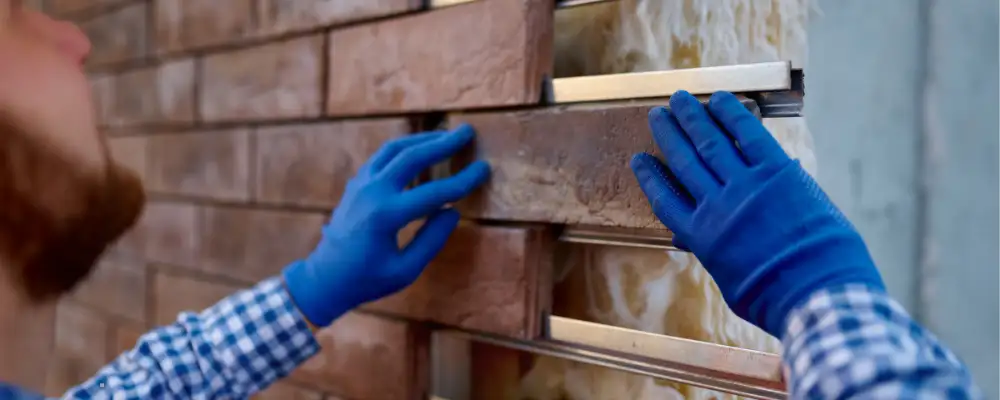Providing cladding is a popular construction technique, that balances both the looks and functionality of the structure. It provides an additional layer that acts as a barrier against external conditions and is more efficient. This blog will explore cladding in detail and help you understand its importance.
What is Cladding?
Cladding is the process of providing an additional layer to the building’s external structure to enhance protection and visual appeal. It provides enhanced durability, ventilation, aesthetic beauty, and various functional and visual purposes of the building. These claddings are most commonly used in structures such as walls, roofs, or facades of the building.
Types of Cladding
Rainscreen Cladding

It is a two-layered construction method that uses an outer weather-resistant layer and an inner gap behind it. As the name suggests, the rain-screen cladding helps in draining the rainwater and prevents moisture from entering the internal structure of the building. This type of cladding efficiently resists weather and improves energy efficiency.
Curtain Walling

It is a non-structural cladding attached to the building’s frame, especially in high-rise buildings, to provide a lightweight, aesthetic, and weather-resistant facade. The curtain walls are often made of glass or aluminium.
Timber Cladding

As the name reveals, these claddings are generally made of timber. The timber cladding is used for the exterior finish and helps in providing a natural, warm, and aesthetically pleasing appearance to the building. These claddings are most commonly used in both residential and commercial construction.
Metal Cladding

This type of cladding uses metals such as steel, aluminium, and copper and is used as panels or sheets. These cladding materials offer high durability, weather resistance, and sleek looks to modern residential and commercial buildings.
Applications of Cladding
Protection
- Cladding acts as a barrier against rain, snow, and moisture, protecting the structure from water infiltration and potential damage.
- It also helps protect the structure from lateral strong winds, reducing the wind force.
- This cladding also helps prevent harmful UV rays from degrading the building materials.
- The cladding can withstand high temperatures, thus limiting the damage caused by fire.
Insulation
Numerous cladding materials offer high thermal resistance, preventing the external temperature from affecting the room temperature. They help maintain the room temperature, keeping the building cool in summer and warm in winter. This improves energy efficiency and reduces the cost spent on controlling temperature.
Aesthetics
Claddings offer a wide range of architectural and design possibilities, helping the structure to improve its overall appearance and enhance looks. The wide range of customisable opportunities makes it a popular choice for commercial buildings, to create a distinctive brand identity. The claddings are available in various colours, textures, and styles based on the design preferences.
Noise Control
Attaching cladding to the structure helps prevent external noise from entering the inner surface of the building. It is highly effective in places where noise reduction is crucial, especially in urban environments and industrial areas.
Advantages and Disadvantages of Cladding
Advantages
- They protect the structure from harsh weather conditions and rapid temperature changes.
- They offer good insulation properties and reduce energy consumption.
- Claddings are available in various colours, designs, and finishes, adding appealing looks to the existing structure.
- Materials such as metal and plastic claddings are highly durable and require less maintenance.
- Structures with cladding installation add more resale value to the property.
Disadvantages
- The cost of materials and installation process is expensive, especially with stone, metal, or glass.
- Cladding with wooden materials requires regular maintenance for effective usage for a long period.
- Poor application can cause water infiltration, leading to the formation of mould and other structural damage.
- Installing cladding is complex and requires skilled labourers, as any incorrect installation could affect the efficiency, cause leaks, and other structural problems.
Conclusion
In summary, cladding is an essential component in modern construction works that provides enhanced protection, insulation, and appealing looks. It offers numerous varieties of materials and designs, each providing unique properties to ensure durability and efficiency. Although they are expensive, the value they offer makes them a popular choice for residential and commercial projects.
FAQs
Cladding is primarily used to protect the building from external weather and enhance insulation and physical appearance.
Timber, metal, stone, brick, glass, and PVC are some of the most commonly used cladding materials.
Yes, cladding and siding are the same thing; they are the thin panels that are applied to the external surface of the building.
The lifespan of cladding materials varies based on the materials used. In general, metal cladding has a longer lifespan compared to timber cladding.
Yes, cladding helps in improving insulation by protecting the external temperature from affecting the internal surface and helps reduce energy consumption.

